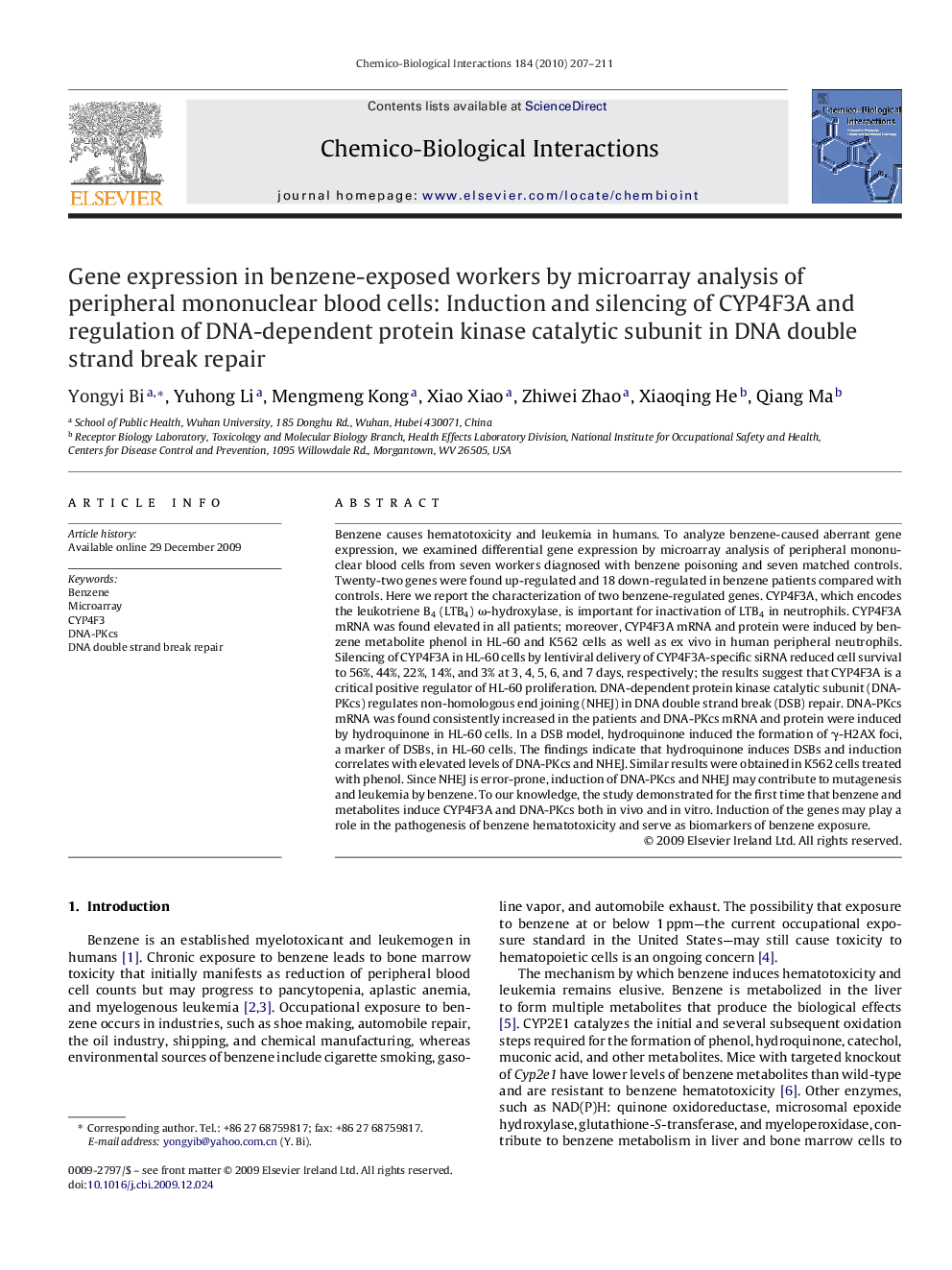| Article ID | Journal | Published Year | Pages | File Type |
|---|---|---|---|---|
| 2581150 | Chemico-Biological Interactions | 2010 | 5 Pages |
Abstract
Benzene causes hematotoxicity and leukemia in humans. To analyze benzene-caused aberrant gene expression, we examined differential gene expression by microarray analysis of peripheral mononuclear blood cells from seven workers diagnosed with benzene poisoning and seven matched controls. Twenty-two genes were found up-regulated and 18 down-regulated in benzene patients compared with controls. Here we report the characterization of two benzene-regulated genes. CYP4F3A, which encodes the leukotriene B4 (LTB4) Ï-hydroxylase, is important for inactivation of LTB4 in neutrophils. CYP4F3A mRNA was found elevated in all patients; moreover, CYP4F3A mRNA and protein were induced by benzene metabolite phenol in HL-60 and K562 cells as well as ex vivo in human peripheral neutrophils. Silencing of CYP4F3A in HL-60 cells by lentiviral delivery of CYP4F3A-specific siRNA reduced cell survival to 56%, 44%, 22%, 14%, and 3% at 3, 4, 5, 6, and 7 days, respectively; the results suggest that CYP4F3A is a critical positive regulator of HL-60 proliferation. DNA-dependent protein kinase catalytic subunit (DNA-PKcs) regulates non-homologous end joining (NHEJ) in DNA double strand break (DSB) repair. DNA-PKcs mRNA was found consistently increased in the patients and DNA-PKcs mRNA and protein were induced by hydroquinone in HL-60 cells. In a DSB model, hydroquinone induced the formation of γ-H2AX foci, a marker of DSBs, in HL-60 cells. The findings indicate that hydroquinone induces DSBs and induction correlates with elevated levels of DNA-PKcs and NHEJ. Similar results were obtained in K562 cells treated with phenol. Since NHEJ is error-prone, induction of DNA-PKcs and NHEJ may contribute to mutagenesis and leukemia by benzene. To our knowledge, the study demonstrated for the first time that benzene and metabolites induce CYP4F3A and DNA-PKcs both in vivo and in vitro. Induction of the genes may play a role in the pathogenesis of benzene hematotoxicity and serve as biomarkers of benzene exposure.
Related Topics
Life Sciences
Environmental Science
Health, Toxicology and Mutagenesis
Authors
Yongyi Bi, Yuhong Li, Mengmeng Kong, Xiao Xiao, Zhiwei Zhao, Xiaoqing He, Qiang Ma,
